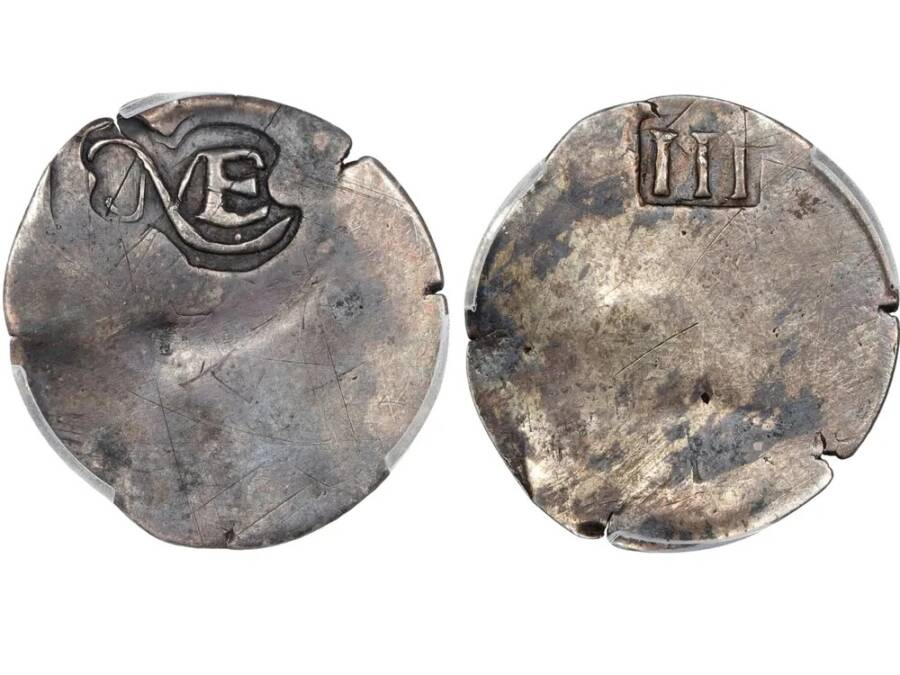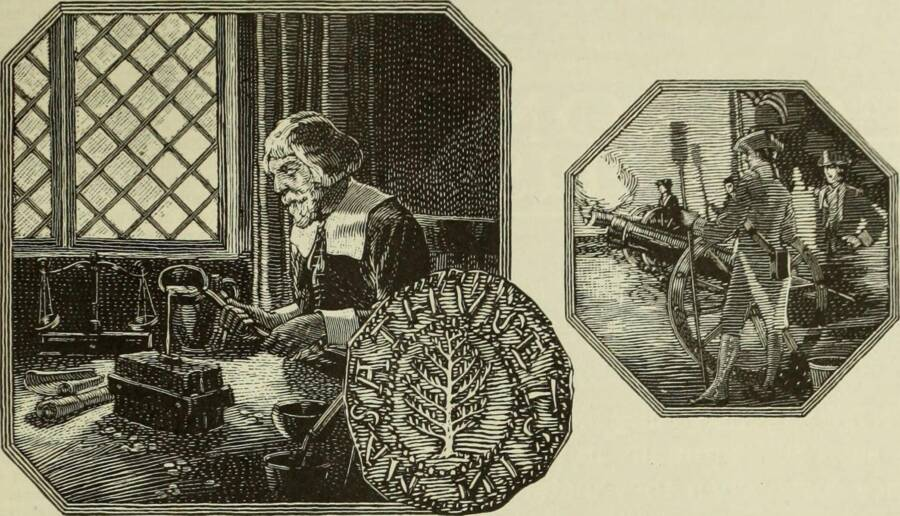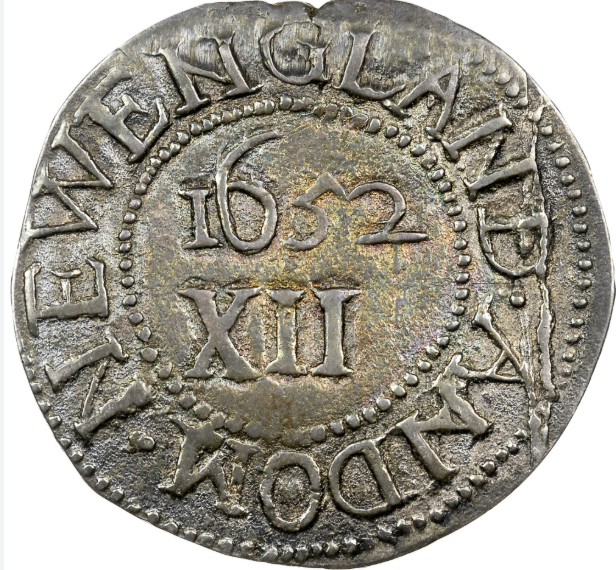A Tiny Coin with a Colossal Story
Sometimes, history doesn’t scream. It whispers. And in the case of a tiny silver coin discovered in the back of an antique cabinet, it whispered loud enough to echo through auction halls centuries later. What looked like a simple token with a face value barely over a dollar turned out to be a 1652 Boston Threepence—one of the earliest coins ever minted in colonial America.
And just recently, this unassuming piece of silver shocked the world by selling at auction for a record-breaking $2.5 million.
How did such a small artifact become such a big deal? Let’s take a closer look at what makes this coin so unbelievably valuable.

It All Started in the Back of a Cabinet
In 2016, a homeowner in Amsterdam stumbled across an old pasteboard box tucked away inside an antique cabinet. Inside the box? A small silver coin and a handwritten note that read:
“Silver token unknown / From Quincy Family / B. Ma. Dec, 1798.”
At first, the coin didn’t seem like much. It was roughly the size of a nickel and carried the “NE” stamp—short for New England. But the homeowner had no idea of the treasure they had unearthed.
Enter the Professional Coin Grading Service (PCGS). After extensive research and verification, the truth came to light: this was no ordinary coin. It was minted in 1652, at the height of New England’s early rebellion against British authority.
Video : A $2.5M Coin Found in an Old Cabinet 😳💰
Why 1652? Why Boston? Why Does This Coin Matter?
Let’s rewind. In the mid-1600s, Massachusetts colonists had a problem—there wasn’t enough official currency to support trade. So they took matters into their own hands. Without permission from the British crown, the Boston Mint began striking coins in 1652. It was a bold move—an act of economic independence more than a hundred years before the Revolutionary War.
The coins included shillings, sixpence, and threepence denominations. Each was stamped with the simple “NE” to indicate its origin. But what made this even more interesting was that all the coins continued to bear the 1652 date, even though they were minted for decades. This wasn’t an accident—it was a calculated move to create legal ambiguity and avoid royal punishment. The 1652 date referred to a time when England was without a monarch, during the Interregnum.
In other words, these coins were an early symbol of colonial resistance, quietly minted in defiance of British law.
Ties to the Quincy Family and the Adams Legacy
The handwritten note included with the coin mentioned the Quincy family, which piqued historians’ curiosity. That family tree happens to include Abigail Adams, wife of founding father and second U.S. President John Adams.

The connection may not be accidental. In 1781, English collector Thomas Brand Hollis wrote to John Adams, then ambassador to the Netherlands, asking for help in acquiring Boston Mint coins. Adams responded by writing to his wife, requesting a few of the rare tokens, noting that her great-grandfather was the stepbrother of the original silversmith, John Hull, who struck the coins.
“Pray send me, half a dozen if you can procure them by different occasions,” Adams wrote.
While we can’t say with certainty whether this exact threepence was one of those coins Abigail sent, the possibility adds a fascinating layer to the coin’s provenance.
The Auction That Made History
After years of quiet study and authentication, the coin was brought to auction by Stack’s Bowers Galleries, one of the most respected names in numismatics. The moment it hit the block, collectors knew they were witnessing something rare.
Over the course of a tense 12-minute bidding war, offers flew in. The pre-sale estimate? Around $800,000. The final hammer price? A staggering $2.52 million.
This sale set a new record for the most expensive non-gold American coin minted before the U.S. Mint was established in 1792. Only one other known Boston threepence survives—and it’s housed at the Massachusetts Historical Society. That makes this piece the only example available for private ownership.
According to Stack’s Bowers expert Vicken Yegparian, “The demand for NE coins has always been high, but this one was on another level. It was historic, rare, and tied to early American identity. That’s a collector’s dream.”
Video : Rare New England threepence will likely sell for $1M at auction
What Makes This Coin So Rare?
Rarity, condition, and story. This threepence checks every box.
- Rarity: Only two known examples exist. One is off-limits in a public collection. The other? Just auctioned.
- Condition: Despite being over 370 years old, the coin is incredibly well-preserved.
- Historical significance: It represents one of the earliest American coins and reflects colonial resistance and innovation.
And then there’s the twist: another similar coin was once in the Yale University collection but disappeared after a theft in 1965. Whether that coin was stolen or lost before the robbery remains unclear—but it hasn’t surfaced since.
A Glimpse Into a Bold Past
What makes this story remarkable isn’t just the money. It’s the audacity of early colonists to forge their own currency while still under the thumb of British rule. These weren’t just coins—they were statements. Symbols of defiance, independence, and a new way of thinking.
In a time when England held tight control over the colonies, the Boston Mint quietly pushed back. These threepence coins, modest in size but massive in meaning, were part of the foundation that would one day support a revolution.

Conclusion: A Coin Worth More Than Gold
The 1652 Boston Threepence is far more than a collector’s item. It’s a rare artifact of rebellion. A symbol of a people not content to wait for permission. A quiet but powerful echo from the past.
From a dusty cabinet in Amsterdam to a $2.5 million spotlight, this little silver coin reminds us that history can hide in the most unexpected places. And sometimes, it takes a sharp eye—and a bold bidder—to bring it back to life.